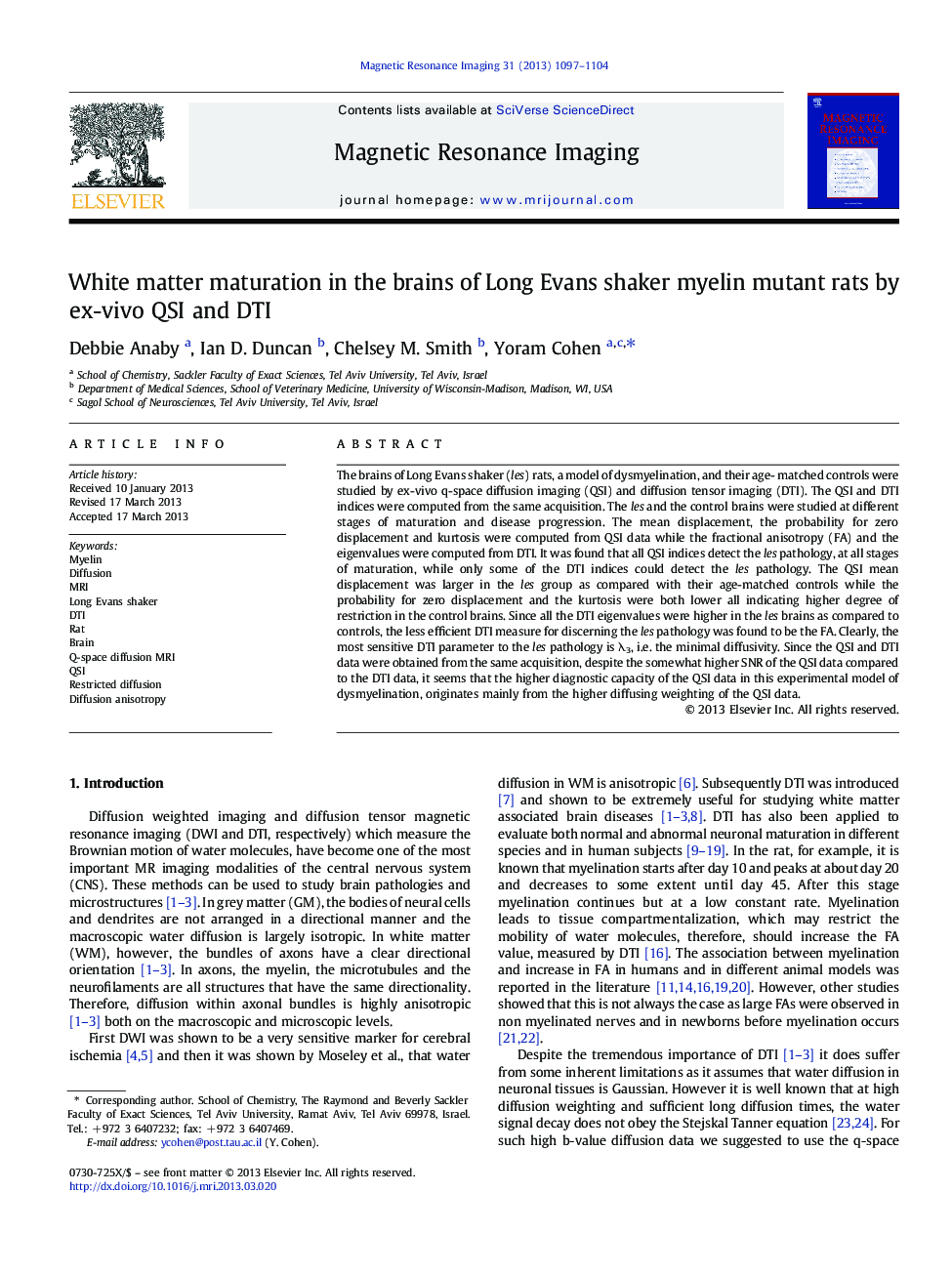| Article ID | Journal | Published Year | Pages | File Type |
|---|---|---|---|---|
| 1806652 | Magnetic Resonance Imaging | 2013 | 8 Pages |
The brains of Long Evans shaker (les) rats, a model of dysmyelination, and their age- matched controls were studied by ex-vivo q-space diffusion imaging (QSI) and diffusion tensor imaging (DTI). The QSI and DTI indices were computed from the same acquisition. The les and the control brains were studied at different stages of maturation and disease progression. The mean displacement, the probability for zero displacement and kurtosis were computed from QSI data while the fractional anisotropy (FA) and the eigenvalues were computed from DTI. It was found that all QSI indices detect the les pathology, at all stages of maturation, while only some of the DTI indices could detect the les pathology. The QSI mean displacement was larger in the les group as compared with their age-matched controls while the probability for zero displacement and the kurtosis were both lower all indicating higher degree of restriction in the control brains. Since all the DTI eigenvalues were higher in the les brains as compared to controls, the less efficient DTI measure for discerning the les pathology was found to be the FA. Clearly, the most sensitive DTI parameter to the les pathology is λ3, i.e. the minimal diffusivity. Since the QSI and DTI data were obtained from the same acquisition, despite the somewhat higher SNR of the QSI data compared to the DTI data, it seems that the higher diagnostic capacity of the QSI data in this experimental model of dysmyelination, originates mainly from the higher diffusing weighting of the QSI data.
